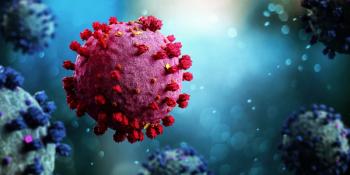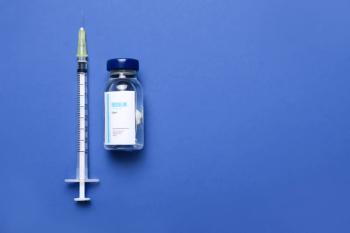
Investigators Link Maternal Distress With Neurodevelopmental Delay Among Children
Key Takeaways
- Maternal psychological distress during pregnancy and postpartum is linked to neurodevelopmental delays in children aged 1.5 to 3 years.
- Human infants experience significant brain development from the fetal period to two years, influenced by genetics and environment.
Due to humans’ physiologically premature nature, researchers explore maternal psychological distress and childhood neurodevelopment.
Psychological distress among mothers was significantly linked with neurodevelopmental delay among children 1.5 to 3 years old, according to a study published in JAMA Network Open.1
“Compared with other mammals, humans are physiologically premature at birth. Although human infants need to be closely monitored by their caregivers for an extended developmental period, this facilitates considerable plasticity in development,” wrote authors of the study. “Indeed, the rapid brain development that starts in the fetal period continues until approximately 2 years of age, and this secondary (late) stage of development, which builds on the first (early) stage, enables flexibility in the acquisition of knowledge, thoughts, behaviors, language, and social skills.”
As the researchers stated and is apparent by their desire to explore the link between newborns and their mothers’ mental health, a child’s first 3 years of life are formative to their brain development. According to UnitedHealthcare, 80% of a child’s brain is developed in its first 3 years of life.2
READ MORE:
However, a child’s neurodevelopment begins well before they are born. With nerve cells in an expecting mother’s womb increasing by 15 million per hour, brain development begins during gestation and continues throughout pregnancy.3
“The process consists of a cascade of steps including proper organization of the brain, rapid proliferation of neurons (‘messengers of information’), myelination (‘speeding up’ information processing), and subsequent synaptic ‘pruning’ of neuronal circuits that are not being used (improving ‘efficiency’ of the brain),” wrote Anisa Kelley, MD, of the Anne & Robert H. Lurie Children’s Hospital of Chicago.4 “It is both genetics and early childhood environmental influences that determine when and how well different stages of the brain will develop.”
With physical links between a mother’s mental health and her child’s during pregnancy, as well as the influences mothers have on their children throughout early childhood, researchers of the current study aimed to better understand this neurodevelopmental link.
As the authors mentioned, previous studies showed the potential link between maternal distress and neurodevelopment. More specifically, maternal psychological distress can include depression, anxiety, and/or general mental stress. For children, neurodevelopment constitutes children’s social, emotional, linguistic, and cognitive development.1
“Repeated measures of maternal psychological distress (during mid-to-late pregnancy and at 1 year postpartum) and child neurodevelopment (from age 6 months to 3 years) were analyzed,” continued the authors of the study. “Our objective was to estimate the effect of psychological distress at each time point on neurodevelopmental delay in toddlers, including potential interactions between time points.”
Using the Japan Environment and Children’s Study data, researchers conducted a birth cohort study across 15 Japanese regions from January 2011 to March 2014.
Both mothers’ psychological distress and children’s neurodevelopment were recorded through the use of questionnaires at a variety of points in each participant’s life. Mothers were given questionnaires at mid and late pregnancy, as well as 0 months, 1 month, 6 months, 1 year, 1.5 years, 2 years, 2.5 years, and 3 years postpartum. Children’s neurodevelopment was monitored every 6 months from ages 1.5 to 3.
Using the Ages and Stages Questionnaire to assess children’s development, neurodevelopmental delay was the main study outcome, “defined as a score less than the cutoff in any of 5 developmental areas identified at any of 4 measurement times (ages 1.5, 2, 2.5, and 3 years).”1
The final analysis consisted of 82,418 mothers and children (mothers’ mean age, 31.1 years; 48.7% of children were girls).
Consistent with the aforementioned data and literature, researchers uncovered a significant risk of neurodevelopmental delay among children whose mothers experienced psychological distress both during pregnancy and postpartum. The risks were greater in postpartum than they were during the mid- or late stages of pregnancy.
“In this cohort study of 82,418 mother-child pairs, maternal psychological distress had an estimated higher risk of neurodevelopmental delay in toddlers both during mid-to-late pregnancy and at 1 year postpartum, with a stronger risk estimate observed in the latter period,” the authors concluded.1 “These findings highlight the importance of maintaining maternal mental health from pregnancy through 1 year postpartum.”
READ MORE:
Don’t get left behind: Sign up today for our
REFERENCES
1. Matsumura K, Tanaka T, Kuroda M, et al. Maternal psychological distress before and after childbirth and neurodevelopmental delay in toddlers. JAMA Netw Open. 2025;8(10):e2540907. doi:10.1001/jamanetworkopen.2025.40907
2. The impact of engaging with a child within their first three years. UnitedHealthcare. July 17, 2023. Accessed November 4, 2025. https://www.uhc.com/news-articles/newsroom/first-three-years
3. Ackerman S. Discovering the brain. Washington (DC): National Academies Press (US); 1992. 6, The Development and Shaping of the Brain. Available from: https://www.ncbi.nlm.nih.gov/books/NBK234146/
4. Kelley A. Brain development in early childhood. Anne & Robert H. Lurie Children’s Hospital of Chicago. March 2, 2023. Accessed November 4, 2025. https://www.luriechildrens.org/en/blog/early-childhood-brain-development-and-health/
Newsletter
Pharmacy practice is always changing. Stay ahead of the curve with the Drug Topics newsletter and get the latest drug information, industry trends, and patient care tips.

















































































































